
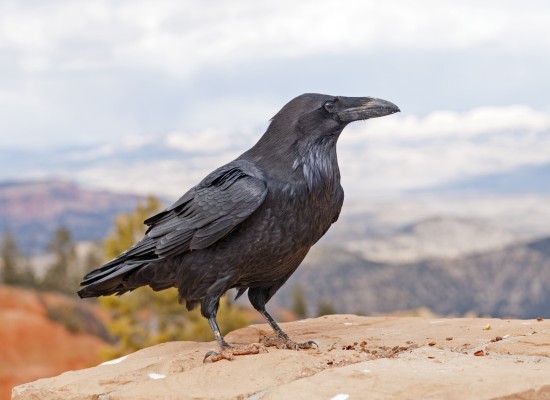
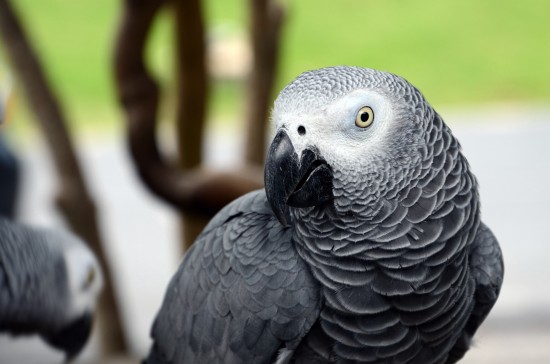
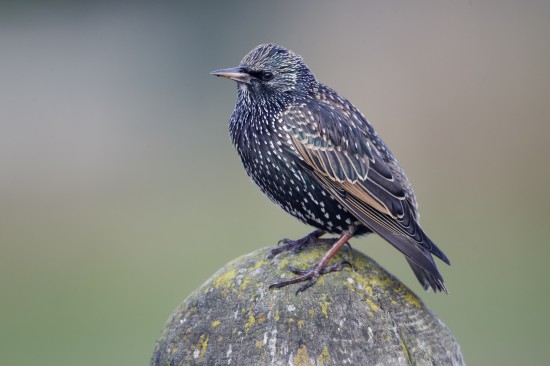
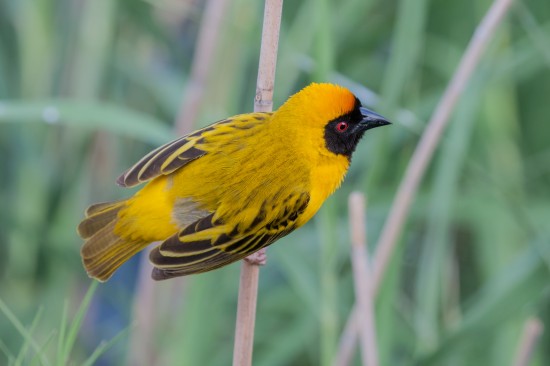
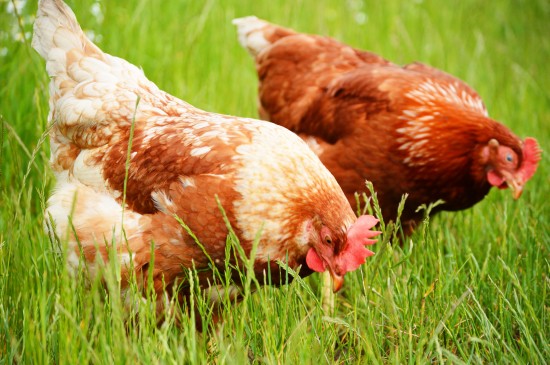
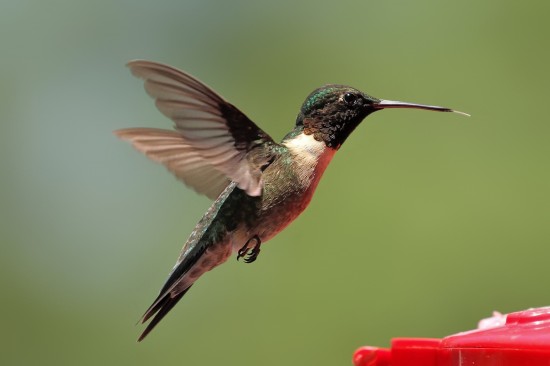
We love birds for their character, their colours and their song but also with some species, for their intelligence. Parrots in particular are known for the intelligence, mimicking abilities and being able to learn tricks and puzzle solving. But who are the smartest birds and how is this decided?
There are two main ways this is decided: the first is how much their behaviour is like our own. The other is the more scientific approach and regards how well the bird has adapted to its environment. Both have their merits and drawbacks but being that birds can’t sit IQ tests, it gives us an idea.
It has long been said that the raven and other crow family birds are extremely intelligent birds and tests have shown that they are perhaps the most intelligent birds. Ravens (Corvus corax) are found in European folklore and Native American traditions dating back centuries and are large birds with glistening black feathers, a heavy bill and broad wings. They have wedge shaped tails that they use to steer when flying and are quite acrobatic at it for their size. When on the ground they have a slightly waddling walk or hop along both feet at a time.
One famous study on the intelligence of ravens was by a man named Bernd Heinrich and was published in a called The Mind of the Raven. He spent decades with captivity and wild ravens and studied their behaviour from a scientific viewpoint. His main conclusion was that ravens can think in a way that lets them understand the consequences of their actions and make decisions based on this. They are adept at problem solving and learning.
The African Grey (Psittcus erithacus) is a familiar bird to anyone who keeps birds and also was made famous as the companion of Long John Silver in the Robert Louis Stephenson’s Treasure Island book. African Greys are known for their powers of speech and not merely as a mimic.
Studies have shown that they can memorise a vocabulary of 500 words and use those words to express their need and in correct context – just like humans do most of the time. They actually have the same level of speech understanding as a three-year-old child. This speech ability may come from the fact that in the wild, they use a large range of vocalisations to communicate with the other members of their flocks. They can ‘talk’ about everything from courting mates, educating their young, talking about food and even mourning those members of the flock who have died.
Starlings (Sturnus vulgaris) are a highly social bird and this group nature often helps to develop intelligence. They are found across Europe, North Africa and Asia and have been introduced to North America where they have made themselves at home. They are more than just a black bird because their plumage has amazing iridescent shimmering to it in shades of blues, greens and pinks.
One of the most obvious signs of the intelligence of starlings comes from a group display known as the murmuration. This is when almost thousands of the birds flock together in a breath-taking display of coordination, their form rapidly shifting and filing the sky. Scientists are not completely sure how the starlings manage this feat or even why they do it but the organisation in the group required to not fly straight into others in the group is phenomenal.
There are numerous species of weavers, mostly from African in the sub-Saharan areas of tropical forests. A few have made their way to southern Asia and also Madagascar. They are the architects of the bird world and have earned their name due to the impressive nests they weave for their mates to lay her eggs in.
These birds are similar in stature to a sparrow and some species have a stout and heavy beak to break open seeds while other are longer and sharp to eat insects. The males are often brightly colours during the breeding season while the females remain plain in colouring.
Weavers are smart birds because not only do they weave these wonderful nests, they learn to do it as they practise. They are not born with the innate ability to make these nests but have to work at it and learn what works for them. Some of the species build communal nest areas that can have hundreds of nests in a colony that requires working together – a bit like town planning.
Chickens aren’t the birds you would normally think of when listing intelligent birds but it can be surprising. Domestic chickens evolved from red jungle fowl around 5000 years ago and are very inquisitive and social birds. They recognise individuals humans, remember places they have been and series of events plus they have a linguistic system that uses around thirty different ‘words’.
Chickens are well-designed birds – they can fly if needed though usually by going straight up in the air to avoid predators. Their beak shape means they can eat a wide variety of foodstuff, which gives them a better chance of survival while their feet are great for scratching the ground to find hidden food.
Of all the 9600 species of birds, hummingbirds must have the fascinating pattern of flight. They have mastered a unique form of flight that combines high speed and a rotating pattern to almost hover in the air like a helicopter. Unlike normal birds, a hummingbird’s shoulder and elbow joints are close together and the bones of the manus (the bird’s hand) are extended. This means they can rotate their wings and also means they can fly long distances. Some can manage three thousand miles in one stretch during migration.
Nor is size an issue with these birds – the smallest hummingbird is also the smallest bird in the world at just 2.5cm long. This is the Bee Hummingbird from Cuba. Everything about these little birds is geared up to their main food, which is nectar from plants. Their special wings allow them to hover at the flower and collect the nectar with their special bill and tongue.
 Why Is Chocolate Harmful To Dogs?
Why Is Chocolate
Why Is Chocolate Harmful To Dogs?
Why Is Chocolate
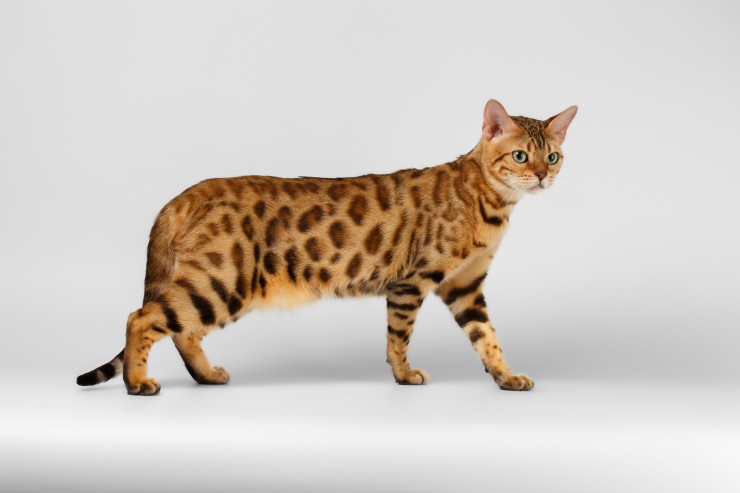 Cat Breeding - Getting Started
Cat Breeding - Ge
Cat Breeding - Getting Started
Cat Breeding - Ge
 Genetic Disorders Seen In Basset Hounds
Genetic Disorders
Genetic Disorders Seen In Basset Hounds
Genetic Disorders
 Rabbit Hutches – a Home for your Bunny Pet to Call their Own
Rabbit Hutches – a Home for your Bunny Pet to Call their O
Rabbit Hutches – a Home for your Bunny Pet to Call their Own
Rabbit Hutches – a Home for your Bunny Pet to Call their O
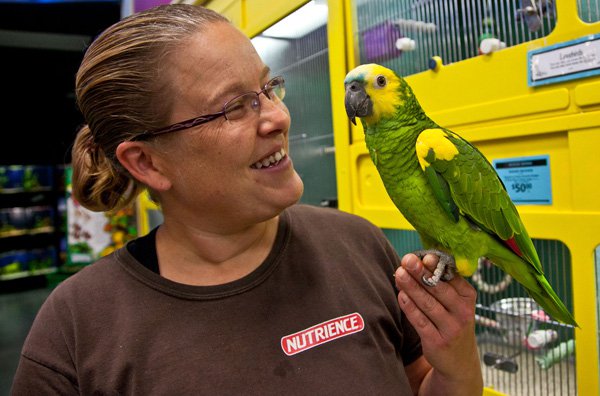 The Advantage of a Portable Dog Water Bottle Dispenser
The Advantage of a Portable Dog Water Bottle Dispenser
The Advantage of a Portable Dog Water Bottle Dispenser
The Advantage of a Portable Dog Water Bottle Dispenser
Copyright © 2005-2016 Pet Information All Rights Reserved
Contact us: www162date@outlook.com